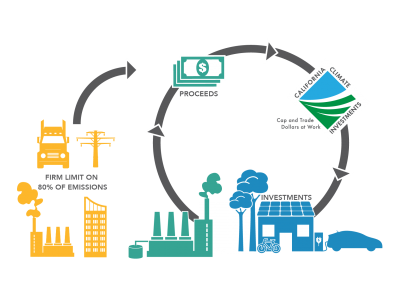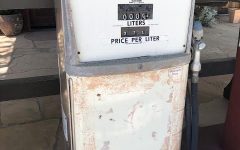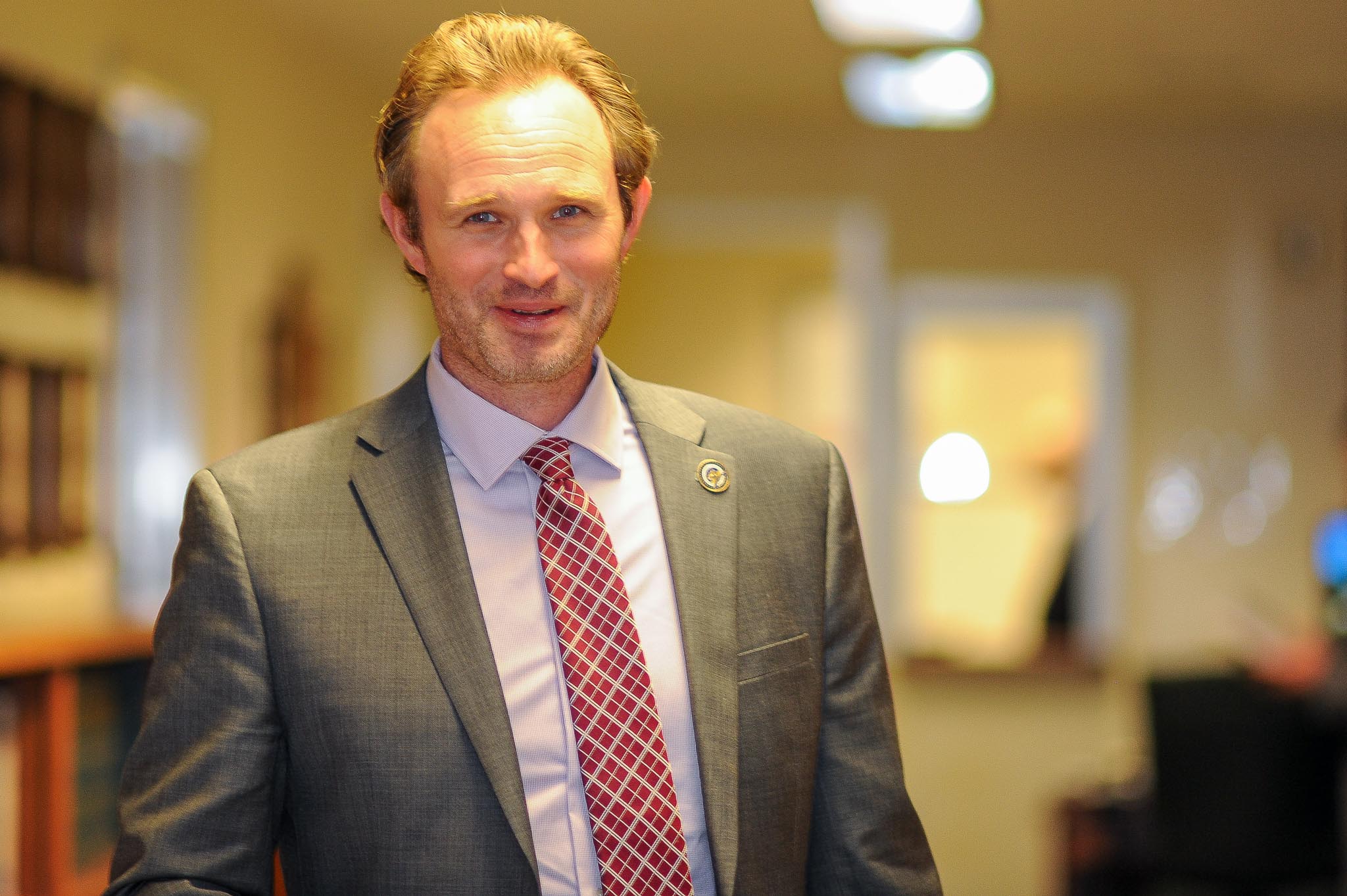
Cap and Trade Program, California Air Resources Board. (Photo: CARB.ca.gov)
So You Want to Emit Less Gas …Buy a Tree at the Airport
Paying to be able to sin is what is called an indulgence
By Thomas Buckley, August 29, 2023 10:39 am
It is a common refrain amongst the plutocracy when they step off their private jet – I bought carbon offsets so I can fly by myself anywhere and it’s not hypocritical because I really care and I make other plant-based donations as I eat my plant-based food.
For the past few years, Jane and Joe Regular have been able to do the same thing by buying an offset at airports – LAX and SFO, to name just a few – before they head off to see their relatives, whom they can then immediately impress/irritate/infuriate by mentioning how they bought a carbon offset.
But what happens after you shell out $29.70 to The Good Traveler to make up for the 2,490 kilograms of carbon dioxide you have spewed going from LAX to JFK and back?
That’s pretty murky – and seemingly intentionally so, because that’s a pretty standard way to confuse people out of their money.
Just to make it very clear: this article does not accept the predictions of catastrophic global warming as they are extremely, well, extreme, utterly fail to account for actual written down personally witnessed by many other human beings indisputable historical data, and are based on computer models oddly similar in concept to those that predicted 106% of the world’s population was going to be killed by COVID.
The “science” is shoddy in the first place, the climate change field is littered with lying grasping academics looking for easy money, and the whole discussion was hijacked very early on by those who saw the amazing political potential in being able to make a “moral” argument to force people to have less stuff and control over their lives so they could have more stuff and more control.
That being said, the voluntary carbon offset industry is inherently shady, byzantine to the point of labyrinthine, and most likely does not have an impact on climate change even if one is of the opinion it is a problem.
One note – this article discusses for the most part voluntary carbon offset programs, which are different from California’s cap-and-trade industry mandates which are equally complicated and absurd and, again, meaningless if one is of the opinion climate change is a problem.
The Good Traveler is just one firm/company/nonprofit/NGO/etc. involved in the industry, so particulars may differ but was created by the San Diego International Airport itself so it’s the “hometown” player and can serve as an example (by the way, even airlines themselves have programs you can just on to the ticket directly.)
Here’s The Good Traveler explanatory video:
So you’ve bought your offset – where does the money actually go? It can go either to a “project” that theoretically captures carbon or it can be given to an environmental charity which may or may not use it to directly capture carbon.
Hmm…Rather missing the point on the donation part, but it is brilliant marketing, a bit like baking soda companies telling customers to buy their product and immediately throw it away by pouring it down the drain when they get home (of course, the baking soda actually does do something about odor, so it’s actually a more honest “ask.”)
Or the money can go directly to a project, though the supporting material offered for many of the programs supported can be, well, pretty vague.
The Carroll Grasslands project in Montana is an “(A)voided Grasslands Conversion” Good Traveler venture, described in part as being a carbon offset because “Grassland-based emission reductions hold great promise as a tool to mitigate climate change but have been underutilized up to this point. The project preserves and conserves the soil carbon, belowground biomass, soil nitrogen, and carbon in surface vegetation.”
So this project seems rather static, merely preserving existence “carbon capture infrastructure” rather than adding to it to actually improve the climate (if you accept the premise.) Basically, your money pays someone else’s property taxes.
Again, hmm…
This brings us to a key word – additionality. If a project offers additionality, in the carbon world, that means a project actually creates new ways to offset carbon rather than just pay to keep the global ability static. To oversimplify, planting a new tree that no one else was going to plant anyway is an example of additionality; paying someone to cover the cost of the tree they were going to already plant is not.
If your money does not cause “additionality” it really isn’t doing any good anyway as it is not adding capture capacity to cover the carbon you added to the atmosphere because you want to go somewhere.
Looking through other projects of the Good Traveler and other organizations, this issue seems to pop up quite frequently.
Here is the definition of “additionality,” from one of the most over-comprehensive website dedicated to explaining anything ever:
“Evaluating whether GHG reductions are additional can be deceptively difficult. The challenge is that GHG-reducing activities occur all the time. Sometimes this is because the activities are required by law. Landfill operators in California, for example, are required to install equipment that captures and destroys methane. In other cases, investments that reduce emissions are made simply because they are profitable, without any consideration of carbon offset credits. An investment in energy-saving lighting, for example, can pay for itself through avoided energy costs. Similarly, renewable energy technologies, like wind and solar, are increasingly cost-competitive with fossil fuels, without revenue from carbon offset sales. For an activity or project to be additional, the possibility to sell carbon offset credits must play a decisive (“make or break”) role in the decision to implement it.”
When someone is asking you for money and admits that analyzing the use of that money “can be deceptively difficult” it should act as a warning sign.
And then there’s guilt, a factor so driving this industry that it is openly featured as a marketing tool. From the Jet-Set Offset (they work with The Good Traveler) website:
“Flying could be your biggest carbon sin … Our Mission: We help you feel better about flying.”
Paying to be able to sin is what is called an indulgence, no different from what the Catholic Church once sold.
And for anyone who still thinks that shelling out that extra $50 bucks will be the exact amount of money needed to finally save the planet, even The New York Times – yup, one of global warming’s biggest hype machines – advises you to think again, From this article:
“In most cases, carbon offsets do not capture or reduce real emissions, and they have a dismal record when it comes to actually averting future emissions.”
Wow – the Times and the Globe agree on something.
Nuff’ said.
- Benefit Fraud Problems and Solutions - November 7, 2024
- A Little Exit Poll - November 5, 2024
- Tomorrow’s Headlines Today! - November 5, 2024





When my wife worked at CalTrans, and they proposed planting trees as mitigation for projects in Bakersfield, the EPA emailed her that there was no scientific evidence that planting trees would work for off-setting green house gasses. Flash forward a year later, the exact same EPA moron, sent a letter to California High Speed Rail, stating they could plant trees to off-set green house gasses during construction.
Freaking morons..!!
“There is a sucker born every minute.”
The California Globe is my daily dose of reality.
This publication “offsets” The Daily Beast.
Would you lefties like to buy a tree to improve your knowledge🤪